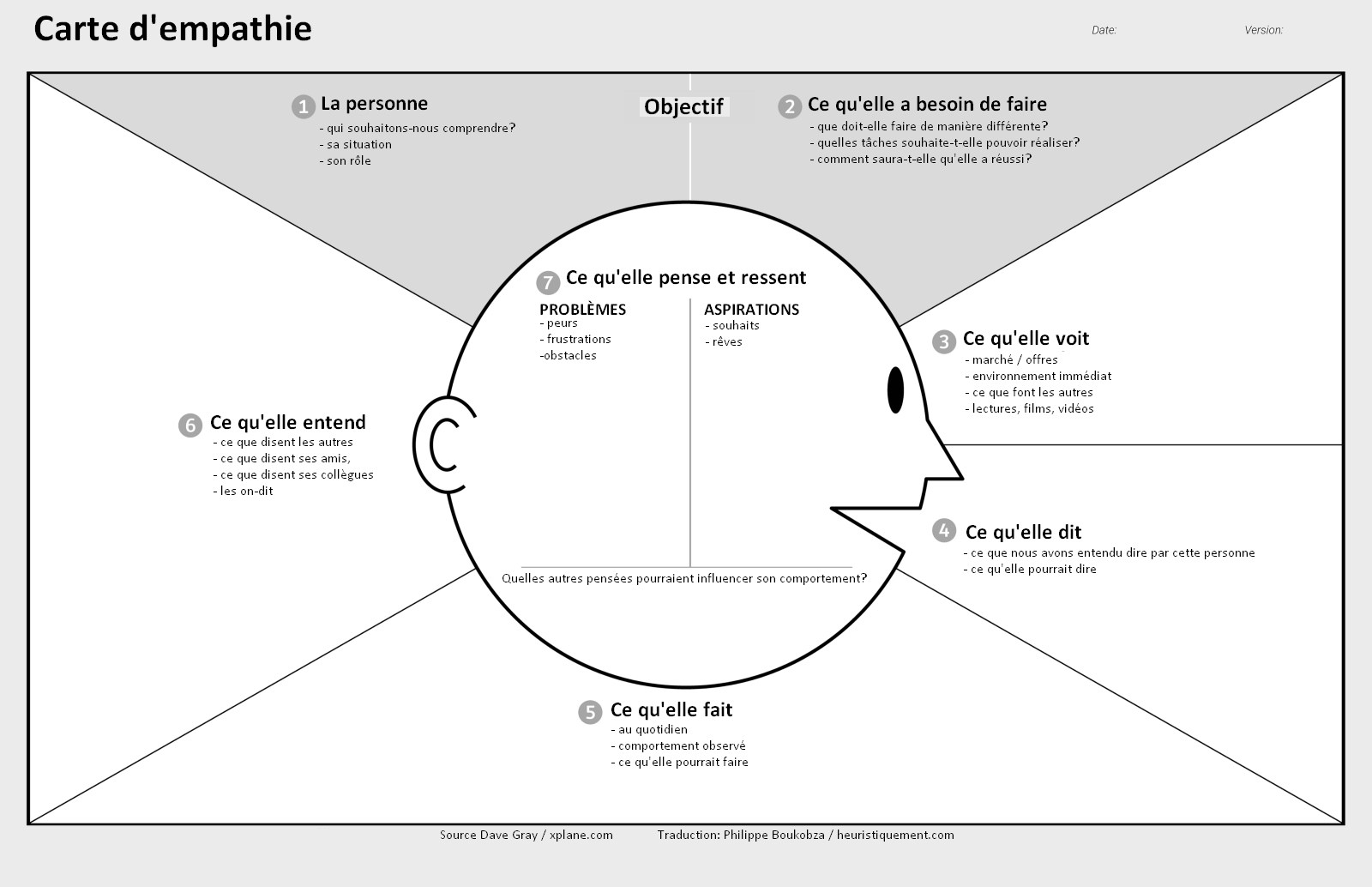Captivating your readers' emotions with the goal of increasing your sales interests you? If so, this complete guide to storytelling is for you! In this post, I'll explain everything you need to know to tell a compelling story online. Plus, you'll likely improve your conversion rate. In a few minutes, you'll know my 12 tips to help you enhance your content with a narrative structure that will not leave your audience indifferent.
👨🏫 What is storytelling?
Storytelling is the art of telling a story. I'm talking about art here, not technique or writing method. Indeed, more than a technical element, it is a process that allows you to humanize your story and touch your reader in a completely unique way.
Composed of two English words, story and telling, the translation is "telling a story." In digital marketing, however, we have become accustomed to defining storytelling as a "narrative communication," a "narrative structure," or a "narrative hook."
It is a communication strategy that many major brands have developed and used to significantly increase their sales. It is also a widely used process in politics. But why is storytelling important in content marketing? What is its real power over your readership? That's what I'll explain right away!
💡 Why use storytelling on your website?
If Coca-Cola or Intersport have become masters in the field, it's because storytelling is a powerful ally for communicating with customers. Although in this article I share many tips for telling a story in writing, this art of selling is also extremely powerful in audio and video. Here's a visual example:
But when should you consider storytelling as a good option when you want to convey a message to your target customers? Discover below the main reasons for communicating in the form of a story.
A story can simplify a message
If you need to understand a new concept or discover a complex product, you may face comprehension difficulties. On the other hand, if the explanation is illustrated and presented in the form of a story, you are more likely to understand this new idea.
Take the example of a physics teacher. If they have to explain a new theorem to their students and only use technical terms and complex equations, there is a good chance that most of their audience will be confused. On the contrary, if the message is conveyed in an illustrated way, based on a fact that is easily relatable, then the probability of getting the message across is much higher.

Stories, therefore, allow you to bypass the comprehension problem on technical or complicated subjects. Good storytelling based on a concrete and identifiable example for the target audience is an excellent way to simplify communication.
Storytelling brings people together
The art of storytelling creates a universal language, understandable and assimilable by most people. By playing with emotions and shared experiences, the transmitted message is impactful. Everyone can identify with the described situation and thus approve the message in their own way.
Regardless of ethnic affiliations or beliefs, stories allow you to sensitize the listener. Barriers seem to be reduced, and the transmitted message becomes accessible to all. As a result, storytelling humanizes its audience through the power of emotions and collective experience.
For example, simply sharing the experience of your customers during or after the purchase process has a great commercial power. Moreover, if this is done in an absolutely honest and transparent way, this process can lead to creating a real community while increasing sales.
Telling a story inspires and motivates
Just as stories make us all more human, the same is true for brands. When they show transparency and authenticity, they become more accessible to their customers. By telling the story of the company and the people behind it, a brand can create feelings and allow everyone to identify with it.
Once this step is taken, a company can then inspire and motivate its customers. Whether for purchase or recommendation! And this also increases the loyalty process. By touching the feelings of your readership, you have the opportunity to gently, respectfully, and humanly push for action.
To do this, there is nothing better than using storytelling on your "about" page. Don't hesitate to reveal yourself and share some personal anecdotes. The difficulties encountered during the creation of your company are also striking aspects that will mark your reader. Even if you romanticize your story a bit, be honest and sincere, and you will touch your audience.
👀 12 tips for successful storytelling

As I mentioned at the beginning of this blog post, storytelling is an art. I cannot give you a step-by-step guide to creating stories that will awaken your reader's feelings. Indeed, it requires practice, skills, and creativity.
However, I can give you the best practices that allow you to humanize your speech. You will then only have to put these tips into practice and discover for yourself when it will work best in your sector. So here are my 12 tips for successful storytelling.
1. Know your audience
Who are you addressing? Who will be interested in your story? Who will benefit from and be influenced by your story? It is obvious that if you do not answer these questions before starting your writing, your goal will have little chance of being achieved. To succeed in your storytelling, you must know your readership perfectly, understand what they think and feel.
Before even writing your first line, you must define your target audience and your buyer persona accurately. First, this allows you to familiarize yourself with your target audience. Then, you can adapt your language and tone accordingly. Finally, this analysis will allow you to effectively build the following 11 points to write quality storytelling.

2. Define your main message
Regardless of the length of your content, your story must have a single goal based around a central message. If we compare this to building a house, you cannot build the roof before establishing solid foundations!
What is the purpose of your story? Do you want to sell a product, attract your reader to your conversion funnel, or raise funds for your next solidarity campaign? Is your story intended to detail a service or a cause you have committed to?
3. Decide on the type of story
Depending on the feelings you want to instill in your reader and the reactions you expect, the style of your storytelling will vary considerably. Here are the different objectives I have listed and some tips for adapting your story according to your needs.
- Tell your story: talk about the difficulties you have encountered, your disappointments, and your failures. You can also share your successes and pleasant surprises, while being authentic and as human as possible.
- Share values: touch your reader's emotions by allowing them to identify with your story. Your goal is for your audience to feel affection for the characters and understand the values conveyed, even if they are contrary to their beliefs.
- Teach knowledge: educate your audience by offering a storytelling that relates basic problems and solutions developed. Anecdotes about the difficulties of research and failures are particularly appreciated.
- Promote collaboration: tell a story that encourages exchange and interaction. Your goal is for the reader to remember similar adventures to the one you propose. Neutral characters and a neutral story make it easier to say, "that happened to me too!".
- Push for action: describe a notable success as simply as possible. Don't overdo it, even if the story must prove that the product or service is a solution to your prospect's problem. A short story focused on a unique experience is the best way to achieve its goal.
4. Write according to web writing rules
Even if you are not necessarily trying to optimize your text for natural referencing when telling a story, the rules for writing quality content on the Web apply to storytelling! Remember that your reader is easily distracted and that there is strong competition on the Internet. Moreover, if you do not quickly make your reader want to know more, they will look for information elsewhere.
In addition, here are three crucial rules for properly structuring your storytelling:
-
Introduction: describe a character who has a problem that can be solved by your service or product.
-
Body of the text: detail the usefulness of your solution by detailing the success of your main character.
-
Conclusion: demonstrate the benefit obtained by the character following the use of your product or service.
Below, I give you more details about the content of your story to successfully write your storytelling.
5. Introduce the characters
In every story, there is at least one character! In storytelling, this character should ideally correspond to the reader so that they can identify with it. It is therefore crucial not to neglect point number one (knowing your audience). Preferably, your main character should be likable and resemble your target audience.
If you notice that your story has been successful, you can then reuse your character for your next communication campaigns. Think of those famous characters who were invented from scratch for the needs of a brand or cause. The first one that comes to mind is Sam and road safety prevention. How about you?
6. Describe the setting
By placing your story in a given context, you allow the reader to imagine the setting and the feelings associated with the situation. Be careful, however, not to go into too much detail, as you risk quickly losing your audience. Nevertheless, by effectively describing the environment and situation of your story, you have the opportunity to quickly captivate your readership.
To illustrate this point, I'll use the previous example (Sam and road safety prevention). In this specific case, the setting is easy to identify and requires little detail (a late-night party). However, everyone can identify with this scenario. The reader is therefore more inclined to want to know more about the course of the story.
7. Set a goal
From the beginning of your story, you try to make the purpose of the situation you describe clear. You can then maintain all the suspense of your story to keep your audience until the end of your text.
Of course, the plot of the story depends on your goal. If, for example, you want to sell a product, you can start by demonstrating a common problem. You will then have the opportunity to focus your conclusion on the solutions that your product offers. On the other hand, if you are looking to raise funds, you can detail the benefits of your action to solve a given problem.
8. Surprise the reader
In order to maintain your readers' interest, you need to add surprises and twists to your storytelling. Once again, these unexpected events will be sparingly integrated according to your type of story.
On your "about" page, you can easily add unexpected elements that have delayed your progress. On the other hand, some problems can sometimes lead to solutions that have propelled your company. Don't hesitate to share these anecdotes and sprinkle them with a touch of humor.
9. Refine the story's ending
By applying the previous tips, you have managed to keep your reader until the end of your story. However, the results of your storytelling depend entirely on your conclusion. Remember that you have a hidden commercial goal behind your story, and you are trying to achieve it by touching your audience's feelings.
As a result, the "happy ending" is highly recommended in storytelling. It is unlikely that your conversion rate will skyrocket if you generate negative feelings at the end of your text. In the vast majority of cases, a happy ending is therefore much more effective.
10. Encourage action
At the end of your story, you can finally encourage your reader to take action. Thanks to the power of your story and the feelings you have created throughout your story, the call to action (CTA) can be integrated completely naturally.
Of course, you will reveal the purpose of your content. However, you have put all the chances on your side so that this action seems as logical as possible to your reader. You don't need to be too incisive, as all the work has already been done previously. All that remains is to check whether your storytelling has indeed hit its target.
11. Leave room for a possible sequel
Storytelling is now part of your editorial strategy to boost your online sales. If you have chosen to use this process to market products (whether on sales pages or a blog), you can first analyze the fallout from your stories.
In a second step, you can take advantage of the stories that have been most successful with your audience. So try never to close the door to a potential sequel! If a character or situation is popular, you can then reuse these elements in your future stories.
12. Share your story
Content creation is only the first step in reaching your audience. Especially since SEO sometimes takes a considerable amount of time to bear fruit. Once your content is published, don't hesitate to share it on all your communication channels: social networks, partner sites, newsletters, word of mouth, etc.
Once again, you can take advantage of this action to check the effectiveness of your storytelling. If you find that your goals are not being met, you will then have the opportunity to update your content or simply try to approach the situation differently.
Telling a story on the Web is not a science; it's an art called storytelling! It allows you to humanize your communication, simplify a message, and inspire your audience. Whether to present your company or sell a service, this process is extremely effective when mastered to perfection. To achieve this, you must not only familiarize yourself and practice creating stories but also respect the 12 rules I remind you of here:
1. understand the expectations of your target readers;
2. define your main message;
3. decide on the type of story you will tell;
4. respect the rules of web writing;
5. introduce your characters;
6. describe the place and setting of the action;
7. set a single goal;
8. surprise your readership;
9. take care of the story's ending;
10. push your audience to action;
11. keep the possibility of a sequel;
12. share your content.
Another significant advantage of storytelling is that it often does not expire. We then talk about evergreen content. It's an excellent way to stay visible on search engines in the long term. To learn more about this topic, I suggest you read the following article: "Everything you need to know about evergreen content".
Need to go further?
If you need to delve deeper into the topic, the editorial team recommends the following 5 contents:

